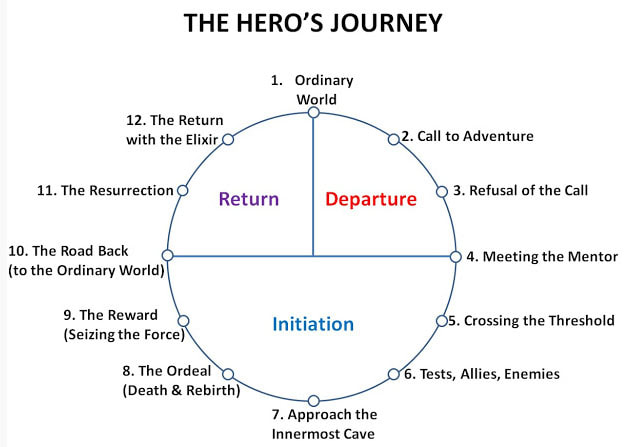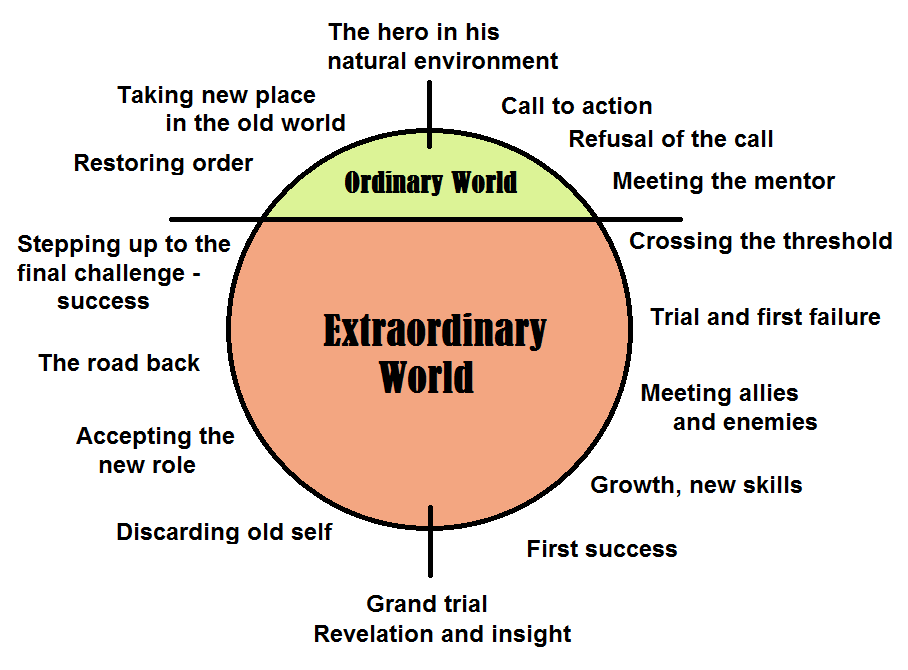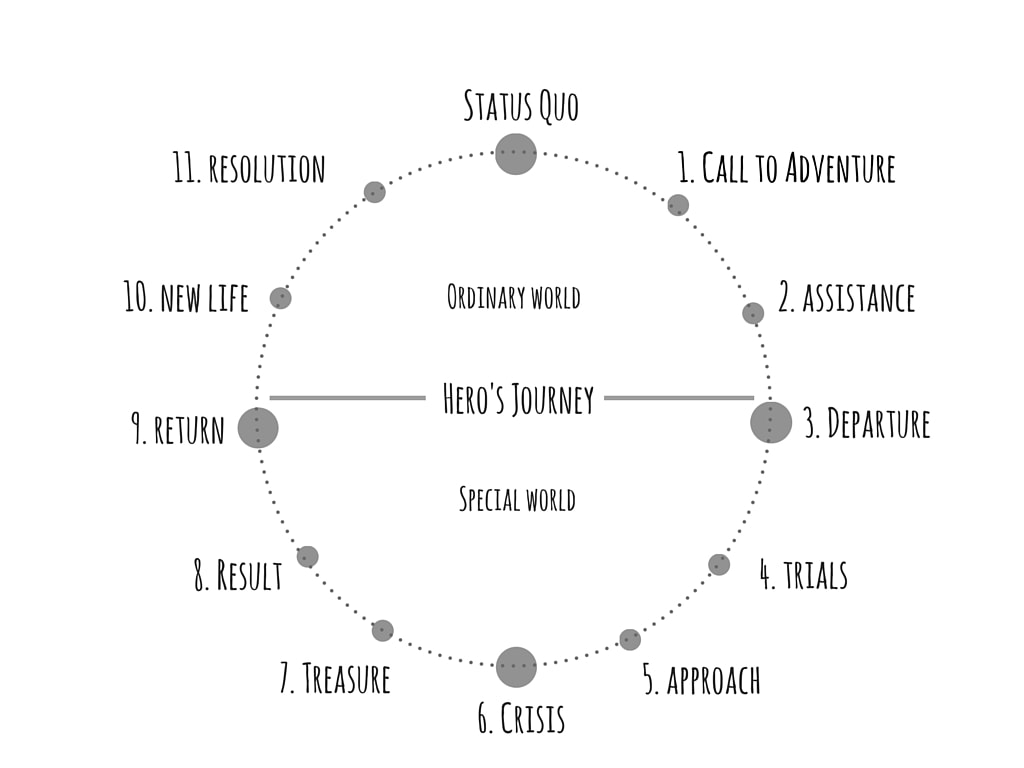The Odyssey Pathfinder
Enduring Understandings |
Students will: |
|
|
Activities
- Students identify and compare/contrast the archetypal hero in modern comic books
- Chalk talk on modern day heroes and how who we view as heroes reflects cultural values
- Students compare the hero’s journey as seen in modern film (O’ Brother Where Art Thou?, Star Wars, LOTR)
- Analyze depiction of Greek gods/heroes in art
- Identify steps of the hero’s journey and elements of an epic within the text and other modern texts
Assessments
- Compare/contrast essay on The Odyssey and O’ Brother Where Art Thou?
- Literary analysis essay evaluating Odysseus as a hero
- Group oral presentation on real life survival stories.
- Socratic seminar discussing whether Odysseus is more of a “hero” in part 1 or part 2. Also, analyze what personality traits his most displays throughout the text
- Journal prompts (letter to Penelope, letter to Telemachus, analysis of the relationship between Penelope and Odysseus)
Background Knowledge
|
In order to understand Homer's The Odyssey fully, you need to know a little about the Trojan War. |
|
Archetypes
In literary theory or criticism, "archetype" signifies narrative designs, character types, or images identifiable in a wide variety of works of literature. The similarities within these reflect universal patterns such as death/rebirth. Other archetypal themes are the journey underground, the hero's journey, the heavenly ascent, the search for the father, the paradise-Hades image. Archetypal characters include the rebel-hero, the scapegoat, the earth goddess, and the fatal woman.
When looking at a piece of literature, the typical questions used to test for the presence of archetypes are:
When looking at a piece of literature, the typical questions used to test for the presence of archetypes are:
- How does this story resemble other stories in plot, character, setting, or symbolism?
- Are patterns suggested? Are seasons used to suggest a pattern or cycle?
- Does the protagonist undergo any kind of transformation, such as movement from innocence to experience?
- How does the story reflect the experiences of death and rebirth?
- What archetypal events occur in the story? (Quest? Initiation? Descent into the underworld? Ascent into heaven?)
- What archetypal images occur? (Water, rising sun, setting sun, symbolic colors)
- What archetypal characters appear in the story? (Mother Earth? Femme Fatale? Wise old man? Wanderer?)
- What archetypal settings appear? (Garden? Desert?)
- Are the names significant?
- Is there a Christ-like figure in the work?
- Does the writer allude to biblical or mythological literature? For what purpose?
- How does the work reflect the hopes, fears, and expectations of entire cultures (for example, the ancient Greeks)?
- How do myths attempt to explain the unexplainable: origin of man? Purpose and destiny of human beings?
- How do stories from one culture correspond to those of another? (For example, creation myths, flood myths, etc.)
|
|
|
The Hero's Journey
The Hero's Journey is an archetypal story pattern, common in ancient myths as well as modern day adventures.
The monomyth, or the hero's journey, is the common template of tales that involve a hero who goes on an adventure, and in a decisive crisis wins a victory, and then comes home changed or transformed.The concept of the Hero's Journey was described by mythologist Joseph Campbell in his book The Hero with a Thousand Faces and later refined to further address issues of gender and culture.
It can be boiled down to three stages:
The monomyth, or the hero's journey, is the common template of tales that involve a hero who goes on an adventure, and in a decisive crisis wins a victory, and then comes home changed or transformed.The concept of the Hero's Journey was described by mythologist Joseph Campbell in his book The Hero with a Thousand Faces and later refined to further address issues of gender and culture.
It can be boiled down to three stages:
- Departure: the Hero leaves the familiar world behind.
- Initiation: the Hero learns to navigate the unfamiliar world of adventure.
- Return: the Hero returns to the familiar world.
Stages of the Hero's Journey
Birth
Fabulous circumstances surrounding conception, birth, and childhood establish the hero's pedigree, and often constitute their own monomyth cycle.
Call to Adventure
The hero is called to adventure by some external event or messenger. The Hero may accept the call willingly or reluctantly.
Helpers/Amulet
During the early stages of the journey, the hero will often receive aid from a protective figure. This supernatural helper can take a wide variety of forms, such as a wizard, and old man, a dwarf, a crone, or a fairy godmother. The helper commonly gives the hero a protective amulet or weapon for the journey.
Crossing the Threshold
Upon reaching the threshold of adventure, the hero must undergo some sort of ordeal in order to pass from the everyday world into the world of adventure. This trial may be as painless as entering a dark cave or as violent as being swallowed up by a whale. The important feature is the contrast between the familiar world of light and the dark, unknown world of adventure.
Tests
The hero travels through the dream-like world of adventure where he must undergo a series of tests. These trials are often violent encounters with monsters, sorcerers, warriors, or forces of nature. Each successful test further proves the hero's ability and advances the journey toward its climax.
Helpers
The hero is often accompanied on the journey by a helper who assists in the series of tests and generally serves as a loyal companion. Alternately, the hero may encounter a supernatural helper in the world of adventure who fulfills this function.
Climax/The Final Battle
This is the critical moment in the hero's journey in which there is often a final battle with a monster, wizard, or warrior which facilitates the particular resolution of the adventure.
Flight
After accomplishing the mission, the hero must return to the threshold of adventure and prepare for a return to the everyday world. If the hero has angered the opposing forces by stealing the elixir or killing a powerful monster, the return may take the form of a hasty flight. If the hero has been given the elixir freely, the flight may be a benign stage of the journey.
Return
The hero again crosses the threshold of adventure and returns to the everyday world of daylight. The return usually takes the form of an awakening, rebirth, resurrection, or a simple emergence from a cave or forest. Sometimes the hero is pulled out of the adventure world by a force from the daylight world.
Elixer
The object, knowledge, or blessing that the hero acquired during the adventure is now put to use in the everyday world. Often it has a restorative or healing function, but it also serves to define the hero's role in the society.
Home
The hero comes back from this mysterious adventure with the power to bestow boons on his fellow man.
Source: orias.berkeley.edu/resources-teachers/monomyth-heros-journey-project
Birth
Fabulous circumstances surrounding conception, birth, and childhood establish the hero's pedigree, and often constitute their own monomyth cycle.
Call to Adventure
The hero is called to adventure by some external event or messenger. The Hero may accept the call willingly or reluctantly.
Helpers/Amulet
During the early stages of the journey, the hero will often receive aid from a protective figure. This supernatural helper can take a wide variety of forms, such as a wizard, and old man, a dwarf, a crone, or a fairy godmother. The helper commonly gives the hero a protective amulet or weapon for the journey.
Crossing the Threshold
Upon reaching the threshold of adventure, the hero must undergo some sort of ordeal in order to pass from the everyday world into the world of adventure. This trial may be as painless as entering a dark cave or as violent as being swallowed up by a whale. The important feature is the contrast between the familiar world of light and the dark, unknown world of adventure.
Tests
The hero travels through the dream-like world of adventure where he must undergo a series of tests. These trials are often violent encounters with monsters, sorcerers, warriors, or forces of nature. Each successful test further proves the hero's ability and advances the journey toward its climax.
Helpers
The hero is often accompanied on the journey by a helper who assists in the series of tests and generally serves as a loyal companion. Alternately, the hero may encounter a supernatural helper in the world of adventure who fulfills this function.
Climax/The Final Battle
This is the critical moment in the hero's journey in which there is often a final battle with a monster, wizard, or warrior which facilitates the particular resolution of the adventure.
Flight
After accomplishing the mission, the hero must return to the threshold of adventure and prepare for a return to the everyday world. If the hero has angered the opposing forces by stealing the elixir or killing a powerful monster, the return may take the form of a hasty flight. If the hero has been given the elixir freely, the flight may be a benign stage of the journey.
Return
The hero again crosses the threshold of adventure and returns to the everyday world of daylight. The return usually takes the form of an awakening, rebirth, resurrection, or a simple emergence from a cave or forest. Sometimes the hero is pulled out of the adventure world by a force from the daylight world.
Elixer
The object, knowledge, or blessing that the hero acquired during the adventure is now put to use in the everyday world. Often it has a restorative or healing function, but it also serves to define the hero's role in the society.
Home
The hero comes back from this mysterious adventure with the power to bestow boons on his fellow man.
Source: orias.berkeley.edu/resources-teachers/monomyth-heros-journey-project



